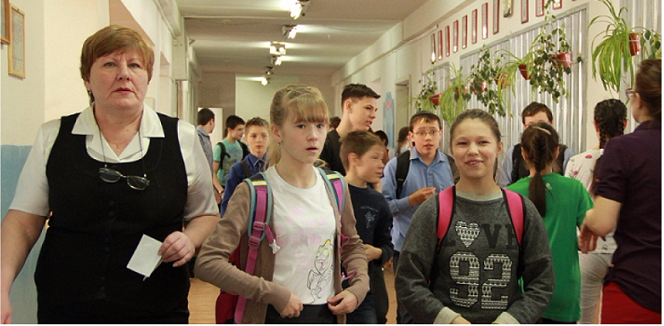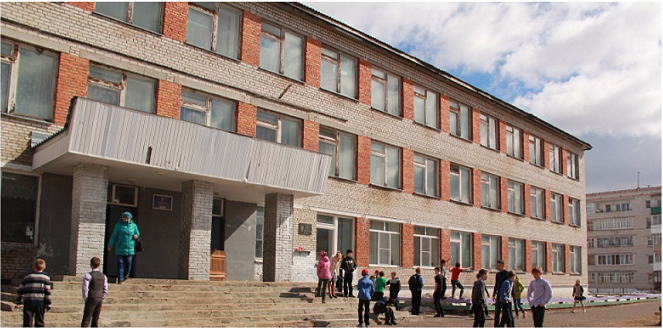About Stone Eel and Red Book’s Bullhead
Silver Taiga’s lectures at Usogorsk secondary school spoke about the Mezen ichthyofauna.
As part of the Model River Mezen project implemented by the Silver Taiga Foundation for Sustainable Development, Nikolay Shilov, the project coordinator, conducted some classes devoted to the Mezen ichthyofauna diversity.
Lectures 35 minutes each seemed very short, as they were perceived at one sitting. Udora schoolchildren were truly interested in what Nikolay Shilov was telling them about the Mezen’s fish population during four classes for different groups. Meanwhile, it turned out that half of the participants in some groups were experienced fishers, and even some girls which may be surprising. Young fishermen enjoyed comparing their personal experience with the ichthyology expert’s lecture, they gesticulated a lot and tried to show the size of their biggest catch.
It is obvious that the ichthyofaunal of such a powerful river is rich and diverse. The kids got agitated when the story mentioned big inhabitants of the Mezen that are well known to them, such as salmon, grayling or burbot, but they were quiet when smaller fish often caught with a rod and paid so little attention to was discussed. At the lesson they saw the bigger size fish models, so they did not recognize the “old friend” at once. However, they appeared to know a lot about the bullhead recorded in the Red Book of the Russian Federation, which is the merit of local teachers of natural sciences. Silver Taiga’s expert immediately caught the attention of the audience and “hooked” them by starting the lesson with a question about the length of the Mezen river. The attendees found it difficult to answer, as they couldn’t say it right at once. Each of the kids is familiar with a particular section of the river only, and has never wondered how far the river they see as an element of the landscape extends beyond the horizon. The schoolchildren were surprised to learn that the length of the river they live by is almost a thousand kilometers.
The stone eel was given a special focus by Nikolay Shilov. Actually, it is not a fish, but it is remarkable by residing right in Udora rivers, so it became a so-called brand of the district. The children learnt how the Far East humpback salmon and famous Volga starlet had appeared to be in the Mezen. The humpback salmon was brought there on purpose in 1958 to accelerate the rate of return for fishery farms. As for the starlet, it is still a mystery how it managed to get in the Mezen.
The ichthyology expert continued his lecture about the humpback salmon and spoke about the scientists’ disputes related to whether this species habitation near salmon is harmful. According to his personal view, the humpback salmon has no effect on the salmon population, and it is just a myth that the Far East migrant ruins nests of the Atlantic salmon.
The “biography” of the burbot, the only representative of codfishes in the Mezen, was of great interest for the schoolchildren. Initially, it was a sea-fish, but owing to climate change it remained in freshwater habitat. When Nikolay Shilov spoke about the perch, he mentioned such topics as pollution and river shallowing. Perch likes plant-filled water bodies, and its population has been increasing too much recently, as river beds are not cleaned or deepened.
When the lessons were over, the schoolkids approached the lecturer with requests about a possibility to get to the summer ichthyology school facilitated by the Silver Taiga Foundation every year.




